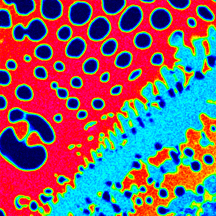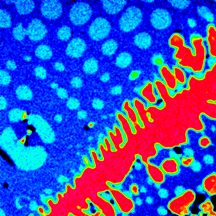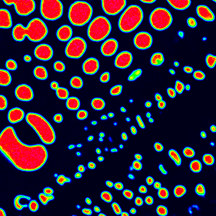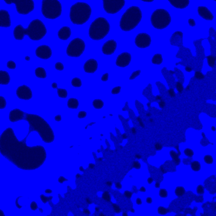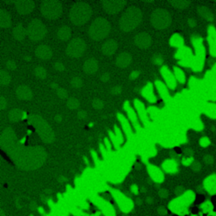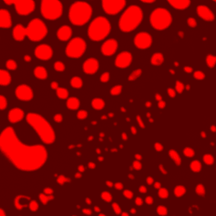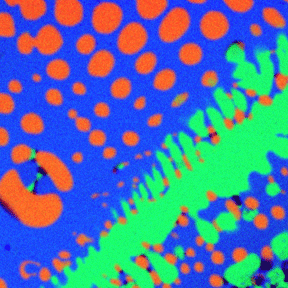| McSwiggen & Associates |
| /Tech Notes/Phase Analysis |

| Often times it is difficult for individuals to visualize the relationships within a sample by just looking at a series of element maps. Figure 1 is a set of maps for the elements arsenic (As), sulfur (S) and iron (Fe). Each map shows the relative X-ray intensity for that one element. Areas of the arsenic map that are dark colored have little or no arsenic in them, while areas that are red have high a concentration of arsenic. But if the question is how many phases occupy this area and how are they distributed, it is often hard to extract this information from a set of individual element maps. A solution to this problem is to create a single phase map from the element maps. |
Figure 1A. Arsenic element map. |
Figure 1B. Iron element map. |
Figure 1C. Sulfur element map. |
| Phase maps can be constructed using a number of different approaches. The easiest is to take each element map and change the the color scheme so that one is displayed only in shades of red, one in shades of green, and one in shades of blue. The maps in Figure 2 are the same as those in Figure 1, but with this new color scheme. |
Figure 2A. Arsenic map displayed in shades of blue. |
Figure 2B. Iron map displayed in shades of green. |
Figure 2C. Sulfur map displayed in shades of red. |
|








